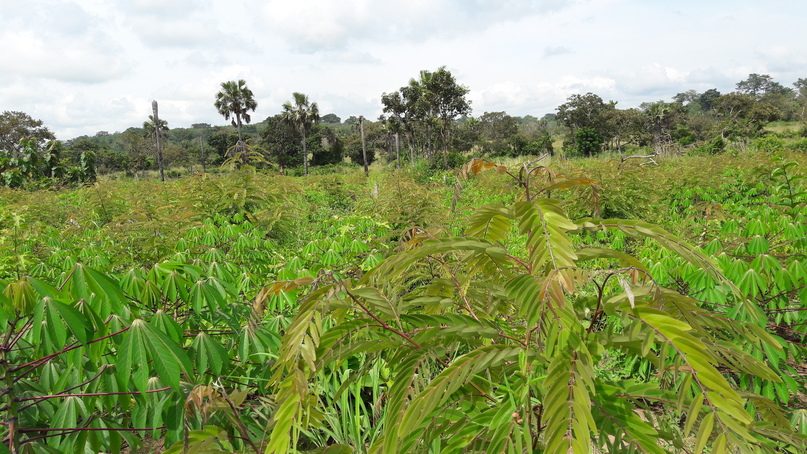Green supply chains, income essential for landscape restoration
02 December 2018, Bonn, Germany

An area of the Ahua gazetted forest, Côte d’Ivoire, restored by rural women using acacia trees interplanted with cassava. Photo: MALEBI
The discussion forum, “From forests to markets: making supply chains greener through public–private partnerships”, was co-organized by ITTO, the Food and Agriculture Organization of the United Nations (FAO) and the Center for International Forestry Research (CIFOR). Its purpose was to promote a common understanding among stakeholders—including communities and the private sector—on the role of productive forests and legal and sustainable supply chains in sustainable landscape restoration and thereby to further the objectives of the Bonn Challenge, the New York Declaration on Forests and the Sustainable Development Goals.
“When sustainably managed, restored forest landscapes have the potential to greatly contribute to a circular bio-economy by providing sustainable timber, energy, food and environmental services,” said Dr Dieterle. “Selling these through green supply chains is also essential because the only way to ensure ongoing restoration and sustainable management is to enable local people to earn sustainable incomes from such activities.”
Further guidance on landscape restoration is needed, said Dr Dieterle, to promote financially viable forested landscapes and to drive much-needed investment in forestry and thereby help close the timber supply gap in many tropical countries.
“In the same way we talk about food security for the people of the future, we also need to talk about their wood security, their water security, and so on,” said Dr Dieterle. “If tropical forests are unable to meet the growing demands of society, pressure will increase dramatically on remaining natural forests and protected areas.”
Dr Dieterle said that the Intergovernmental Panel on Climate Change’s Special Report, released in October 2018, makes it very clear that, without massive investment in forests and the use of forest-based products as part of a more circular economy, “there isn’t the slightest chance of keeping the global temperature increase within the Paris target of 1.5 ˚C”. Land management, therefore, said Dr Dieterle, “must move beyond insular approaches on carbon, biodiversity, timber and food towards integrated, landscape-based solutions that meet the varied needs of humanity”.
Dr Dieterle said consumer markets for tropical timber products could help drive sustainable forest management in the tropics. He referred to a recent initiative by Chinese companies in the forest sector to move towards global green supply chains in their procurement, production and marketing processes, for which they have requested assistance from ITTO.
Dr Juergen Blaser, from Bern University in Switzerland, spoke at the discussion forum on ongoing work to revise and update the ITTO Guidelines for the Restoration, Management and Rehabilitation of Degraded and Secondary Tropical Forests within the framework of the Collaborative Partnership on Forests (CPF) with a view to strengthening the links between financing and forest landscape restoration. According to Dr Blaser, the keys are to match public and private interests and to develop green investments that provide short-, medium- and long-term returns through the sustainable management of forest and other landscape assets and sustainable supply chains.
Other speakers at the event included FAO Assistant Director General Hiroto Mitsugi, who spoke about the CPF initiative known as Sustainable Wood for a Sustainable World, the aim of which is to promote the interlinkages between forest management, landscapes, value chains, livelihoods, markets, investments and financing mechanisms. Forest restoration can create business opportunities for stakeholders in places where investments are greatly needed.
Dr Robert Nasi, CIFOR Director General, spoke of the need to change the forest landscape restoration paradigm to ensure the profitability of restoration efforts when forests act as carbon sinks.
Ms Mirijam Kuzee from the International Union for Conservation of Nature spoke about the role of commodity supply chains in the landscape continuum, saying that benefits can only be reaped where coherent supply chains exist.
One of the key messages conveyed was that primary untouched forests need to be conserved, whereas secondary forests need to be managed sustainably and degraded forests sustainably restored.
Participants at the forum also watched a video on an ITTO project showing how rural women in Côte d’Ivoire have been able to link forest rehabilitation with a thriving wood-charcoal business and to change perceptions of the role of women in forest landscape restoration. The video addressed gender equality and empowerment and the way in which the women were overcoming cultural complexities within their community.
Download the presentations: